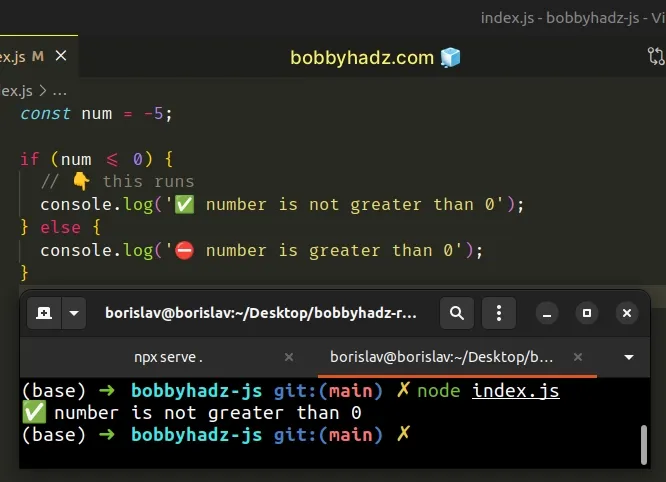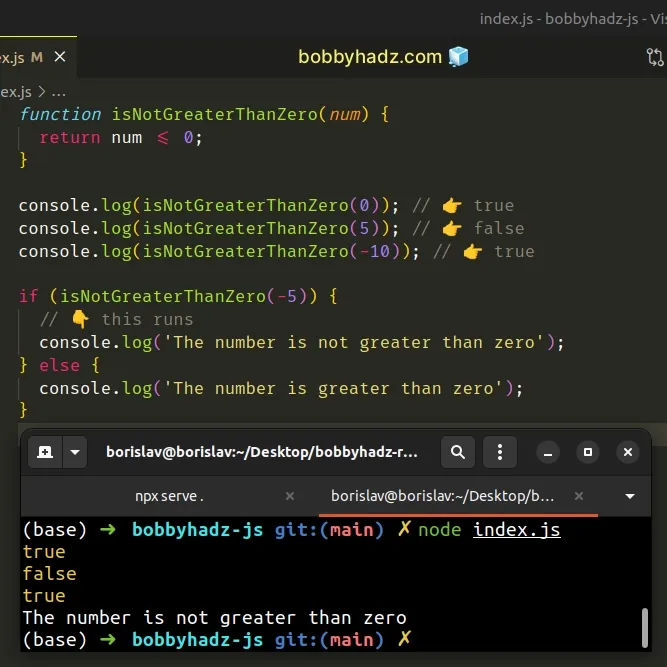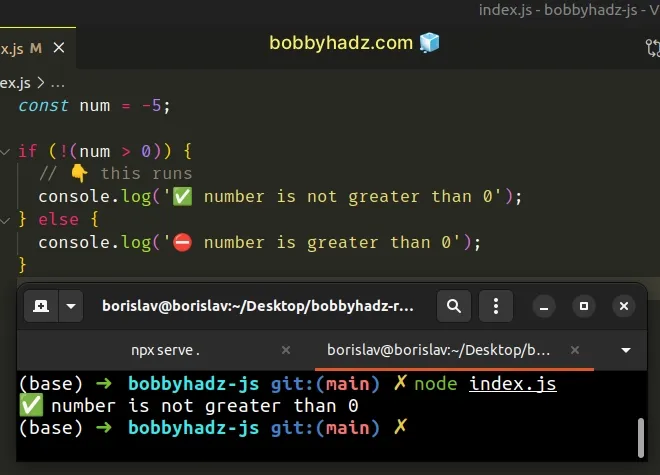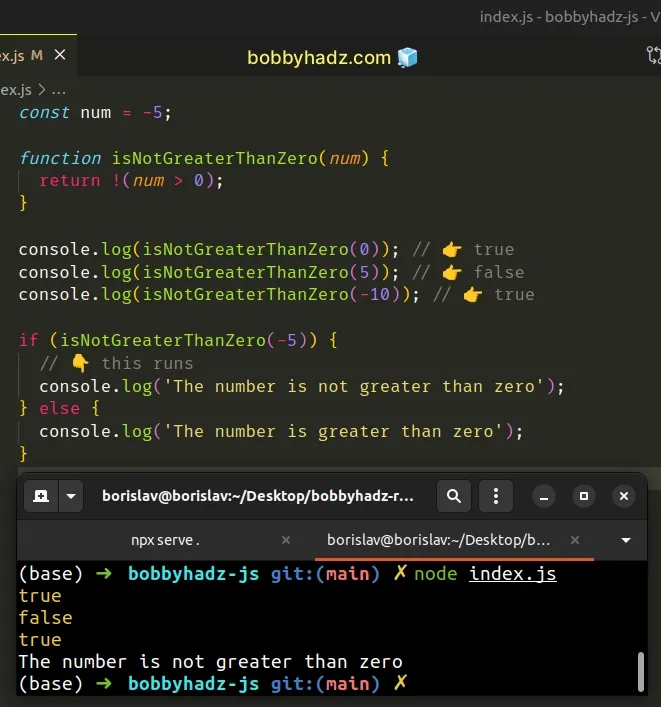Check if Number is not Greater than 0 in JavaScript
Last updated: Mar 3, 2024
Reading time·3 min

# Check if a Number is not Greater than 0 in JavaScript
Use the less than or equals to <= operator to check if a number is not
greater than zero, e.g. if (num <= 0) {}.
The comparison will return true if the number is not greater than zero and
false otherwise.
const num = -5; if (num <= 0) { // 👇️ this runs console.log('✅ number is not greater than 0'); } else { console.log('⛔️ number is greater than 0'); }

The less than or equals to <= operator returns true if the value to the left
is less than or equal to the value to the right.
If the number is less than or equal to 0, then it's not greater than 0.
If you have to check if a number is not greater than 0 often, define a
reusable function.
function isNotGreaterThanZero(num) { return num <= 0; } console.log(isNotGreaterThanZero(0)); // 👉️ true console.log(isNotGreaterThanZero(5)); // 👉️ false console.log(isNotGreaterThanZero(-10)); // 👉️ true if (isNotGreaterThanZero(-5)) { // 👇 this runs console.log('The number is not greater than zero'); } else { console.log('The number is greater than zero'); }

The isNotGreaterThanZero function takes a number as a parameter and returns
true if the number is not greater than zero and false otherwise.
# Check if a Number is not Greater than 0 using logical NOT (!) operator
Alternatively, you can use the logical NOT (!) operator.
If the number is not greater than 0, the expression returns true, otherwise
false is returned.
const num = -5; if (!(num > 0)) { // 👇️ this runs console.log('✅ number is not greater than 0'); } else { console.log('⛔️ number is greater than 0'); }

We used the logical NOT (!) operator to negate the greater than sign.
Note that we had to wrap the condition in parentheses.
num variable to a boolean and negate the result.const num = -5; // ⛔️ BAD (don't do this) console.log(!num > 0); // 👉️ false
The code sample above doesn't use parentheses, so we convert the num variable
to a boolean and negate it.
const num = -5; console.log(!num); // 👉️ false
All numbers other than 0 are truthy values, so when converted to a boolean,
they get converted to true and when negated, they become false.
Instead, we want to wrap the expression in parentheses.
const num = -5; if (!(num > 0)) { console.log('✅ number is not greater than 0'); } else { console.log('⛔️ number is greater than 0'); }
Now we first check if the number is greater than 0, then convert the result to
a boolean and negate it.
If the number is greater than 0, the expression returns true and when the
logical NOT (!) operator is applied, false is returned, so the else block
runs.
The if block runs only if the number is not greater than 0.
If you have to do this often, define a reusable function.
const num = -5; function isNotGreaterThanZero(num) { return !(num > 0); } console.log(isNotGreaterThanZero(0)); // 👉️ true console.log(isNotGreaterThanZero(5)); // 👉️ false console.log(isNotGreaterThanZero(-10)); // 👉️ true if (isNotGreaterThanZero(-5)) { // 👇 this runs console.log('The number is not greater than zero'); } else { console.log('The number is greater than zero'); }

The function takes a number as a parameter and returns true if the number is
not greater than 0 and false otherwise.
Which approach you pick is a matter of personal preference. I'd use the
if (num <= 0) {} comparison as I find it more readable and intuitive.
# Additional Resources
You can learn more about the related topics by checking out the following tutorials:

